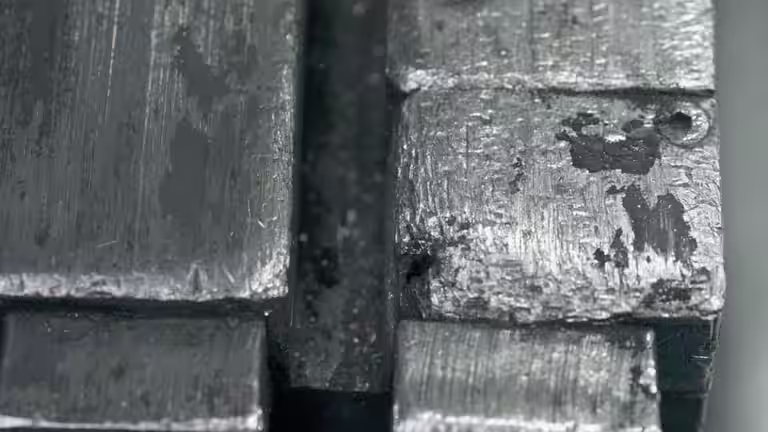Wear
In general, wear is also called abrasion and is the continual loss of material from the surface of a compact body. Progressive wear is caused by grinding, rolling, hammering, scratching, chemical and thermal stress.
The combination of hardness and strength of a material also plays a major role for the wear. It is not enough that a workpiece is particularly hard to prevent damage. If the material is very hard, it is often also rather brittle. This means that the material is difficult to deform.

So if the core of the steel does not contain ductility, the material will break at a certain point. If the material is too ductile, the wear occurs more quickly, especially on the surface, compared to harder metals.
A good ratio between hardness on the outside and ductility in the core of the plate metal is very important!
Basically, there are different types and forms of wear. These differ in the mechanisms that cause the wear. If forces occur due to loads or friction, this leads to abrasion or surface disintegration. If chemical reactions cause material changes to the outer layer of a body, adhesion and tribo-oxidation are the influencing mechanisms.
Mechanisms of wear
Abrasion = Scraping
Abrasion always occurs where a solid body with a rough surface contacts a soft object. Via friction, impact, flow or rotating vibrations, small particles are pressed or scraped into the softer material. Abrasion can also be caused by a liquid carrying rough, hard or sharp-edged particles such as sand. Due to the flow movements, particles carried along by the fluid will rub against the counter body and scrape particles out of the surface. This is also called hydroabrasion.
Adhesion
Wear due to adhesion only occurs to bodies with very similar composition in the metal's structure. When bodies are pressed strongly together by sliding and oscillating movements, abrasion occurs at the interfaces. Holes, curvatures or material flakes are formed. The abraded material binds together and adheres to the surface. This is also called cold welding. This wear can be prevented or minimized by sufficient lubrication.
Surface Disintegration
This wear mechanism is supported by rolling movements, jolts, vibrations, grinding or flows, which occur in alternating sequence. These movements cause material fatigue and as a result the disintegration of the intact surface. Pits, also known as pittings, and small cracks are formed, which may well expand and lead to breakage. In this case as well, sufficient lubrication prevents wear.
Tribochemical Reaction - Tribooxidation
Due to the sliding, swinging or flowing of two bodies against each other, chemical reactions on the surface layers can lead to the formation of oxide layers.
The use of precious metals, plastics or ceramics can positively influence this wear mechanism.
Wear types
They indicate the type of stress that causes the damage.
- Impact Wear
Machine parts are exposed to the constant impact of materials such as stones, gravel and crushed stone. This wear is called impact wear. To protect these components, impact plates are attached, which are made of particularly wear-resistant steels such as Hardox Wear Plate, Creusabro or similar.
- Slide Wear
Components rub against each other by means of sliding movements. This sliding wear is found in engines, for example. The pistons rub against the cylinder and thereby wear and tear is caused. The surfaces are deformed and so-called latchings are created. Even the smallest particles can rub on the surface, which can lead to cracks, scratches or material abrasion. - Shock Wear
The abutting movements of components or materials colliding with a component, as is the case with shredding machines, results in shock wear. This deforms the surfaces and can lead to cracks or material removal. - Rolling Wear
Rolls or cylinders move on a body with high pressing force. Pressing forces and frictional forces affect the surface of the material, resulting in surface disintegration. Cracks can occur on the surface and also inside of the material, which promotes the formation of pits.
See also
Brinell hardness test
Performing the hardness test by means of a ball pressure test according to the Swedish engineer Johann August Brinell.
Read moreCoil
Plate metal that is rolled-up to coils is easier to transport and requires less space in the warehouse
Read moreCorrosion
Corrosion is a natural process and damages most metals. What types of corrosion are there?
Read more